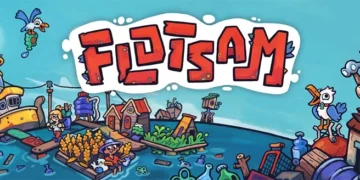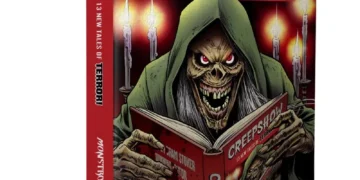Written By: Neal Romanek
Artist: Johan Swärd
Cover Art: Johan Swärd
Published By: Markosia Enterprises
Boudicca, released by Markosia Enterprises, provides a debut in the graphic novel world for both American-British writer Neal Romanek and Swedish artist Johan Swärd. The novel, set against the backdrop of Roman rule in Britain, closely traces the lives of several historical figureheads, most notably the Iceni Queen from which the story earns its name. Here’s an official line on what readers can expect.
Britain. An island paradise, rich with gold and silver – and the world’s most powerful military machine wants it all for itself. The country and its tribes have been hammered into one unified colony, under one law – Roman law.
When the king of the Iceni dies, his wife, Boudicca, is left with a decision: continue her husband’s path of compromise with the Roman invaders, or be true to the voice of freedom inside her.
With the help of a brilliant young druid named Fox, Boudicca’s choice ignites one of the bloodiest revolts in Roman history, a tragic inferno which will enshrine her as one of history’s greatest icons of freedom and rebellion.
This graphic novel, drawn by Johan Swärd and written by Neal Romanek, depicts for the first time the harsh and beautiful world of Celtic Britain in vivid detail– its gods and wild landscapes, its sacred sites and battle lore, and its poet-priests and its warrior-queens.

All truths told, this reviewer read Boudicca from cover to cover in one coffee-fuelled sitting. At 150 pages, the graphic novel skims fast from panel to panel—an impressive feat considering Romanek’s penchant for detail and extensive use of dialogue. Indeed, while the writer indulges us in multiple points of view and interludes of Celtic verse, at no point is the narrative pace allowed to falter. Instead, Boudicca, like a barbarian cavalry charge, covers ground between plot points in the blink of an eye. Paradoxically, its actually this action-packed, battle-heavy style which lends some of the quieter moments greater weight. Nowhere is this more obvious than in the sombre exchanges between Boudicca and her enigmatic druid, Fox. Here, the art of Johan Swärd in particular is given room to breathe. Quite subtly, yet with some flair, Romanek uses such silent moments to unearth his two main characters in full, allowing him to focus on the spectacle of the tribal revolt elsewhere,
As noted above, dialogue serves as the weapon of choice for Romanek in Boudicca. At times, it could be argued the sheer density of speech drowns out the artwork. Even so, when Johan Sward is called on, he never once fails to deliver. Burning cities, tangled forests, close-quarter combat—all are realised with effortless precision. Up close, Swärd also masters a great depth of emotion in the faces of his characters. Combined with clever shading, the resulting effect is a semi-mythical portrayal of the Boudicca tale whose well-trodden path, if anything, has no right to be re-imagined with such welcome clarity.

In terms of tone, Romanek perhaps fittingly regales us his story as though it were a beloved Shakespearian tragedy, with clear elements of Macbeth, Hamlet, and Romeo and Juliet tightly interwoven into the very fabric of Boudicca’s struggle against Roman occupation. Separately, the creative team do the seemingly impossible as, unlike so many of their predecessors, they give us a Celtic world whose roots go beyond bloated generalisations. In nearly every aspect—landscape, religion, customs, dress—Boudicca manages to construct something stirring without resorting to tired stereotypes. The labour of love the author attests to in the preface is undeniably clear in every page.
Character-wise, Boudicca again scores highly, with more than enough heroes and villains for a reader to sink their teeth into. From the noble Paulinus to the near-Machiavellian procurator, Catus, the novel shows us the many motivations of those hungry for power, vengeance, money, conquest and legacy. One wonders whether the author, who seemed to follow Tacitus’ account of the conflict, flirted with the idea of portraying Boudicca’s documented reasons for seeking Roman blood. Notably however, Romanek did borrow elements from the other trusted source, Cassius Dio, ultimately layering the conflict far deeper overall.

All told, Boudicca emerges as a dark, near-romantic glance into history. Its themes, far-reaching, brush against the concepts of national identity and colonialism at a pivotal time in British history. As a debut, it’s a major statement for Neal Romanek and Johan Swärd. We’ll be excited to see what they bring next!
Overall: 10/10
https://www.amazon.co.uk/Boudicca-Neal-Romanek/dp/191124356X
Website: www.nealromanek.com
Twitter: @rabbitandcrow
Johan Swärd
Twitter: @swertte
Instagram: @swertte
Kyle is a pharmacy graduate who spends most of his free time playing with words. A fan of sci-fi and fantasy, he runs a blog over on yourelisteningnow.com and is currently working on his first novel, Mist Rock (italics). In the past he wrote with the award-winning UCC Motley magazine and was nominated for the 2016 Colour Writer of the Year at the SMedia awards.

















